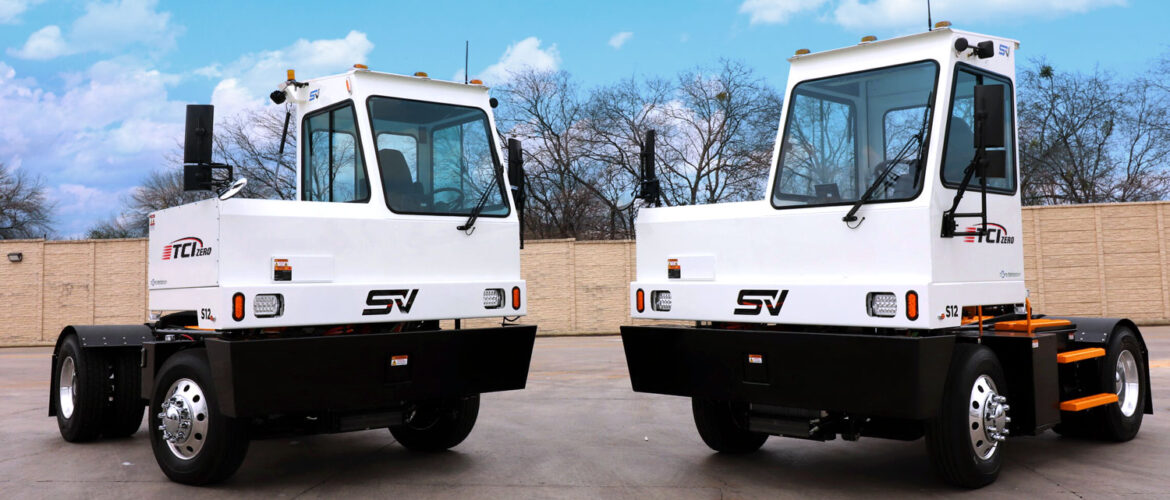The new WAIRE program, also known as Rule 2305, has prompted many questions and concerns about compliance and incorporating it into a business. One big question is whether or not electric vehicles are the best solution to begin with. In this article, we’ll provide an overview of what the WAIRE program is and also address how electric vehicles can help businesses maintain compliance.
What You Need to Know About the WAIRE Program
The Warehouse Actions and Investments to Reduce Emissions (WAIRE) program was proposed in May 2021 with a goal of meeting federal regulations for reducing warehouse associated nitrogen oxide and diesel emissions. Designed to help improve air quality, the WAIRE program directly affects the California South Coast Air Quality Management District.
The WAIRE program affects operators and owners of warehouses that are a minimum of 100,000 square feet and directly involved with “transportation-related activities.” Under Rule 2305, warehouses are defined as “indirect sources of air pollutants”because they “attract cars and trucks which emit the pollutants.”
Requirements and deadlines for submitting the warehouse information reports are based on square footage. For example, larger warehouses with 250,000 square feet, or more, were required to begin compliance efforts in 2022, while those of 150,000 or more square feet must begin efforts in 2023. Once a warehouse assessment begins, mitigation fees will increase over a three year period, as the program evolves completely.
WAIRE Program Compliance
In order to comply with the WAIRE Program, affected warehouses are required to submit relevant facility information. Once approved, the warehouse is granted access to the WAIRE online portal where data is compiled and then graded according to the WAIRE Points Compliance Obligation (WPCO) system.
The WPCO issues points based on the year, warehouse size, and number of truck trips occurring annually. The truck trips are graded based on vehicle/class type because of their emissions variations. The WAIRE program requires warehouses earn a certain number of points each year, based on specific actions, program approved tasks, or paying an emissions mitigation fee.
A couple of ways for warehouse operators to ensure point requirements are met include installing EV charging stations at the warehouse and replacing older fleet vehicles with zero-emission or near-zero-emission equipment.
By meeting the WPCO point requirements, warehouses avoid fees and fines. If there are any points overages earned, they can be banked for the following year.
The Pros and Cons of Electric Vehicles
Over the past few years, society as a whole has been encouraged to transition toward greener lifestyles. In particular, in the state of California — which is viewed as a leader in greenhouse gas reduction efforts — the WAIRE Program is one more step toward that eco-friendly vision.
As part of these efforts, electric vehicles have become more popular and are largely available in the realm of commercial fleets as well. Once electric vehicles are more widely used, fleets will experience higher productivity. Additionally, tax incentives are available at both federal and local levels.
Still, EVs aren’t without a few disadvantages, including range constraints and larger initial investments. Currently, EV batteries are limited to a maximum of 300 miles, which can vary based on climate, terrain, and driver habits. Likewise, charging stations aren’t widely available, especially in remote areas. And another major disadvantage is the higher price tags because EVs cost more in general, and there aren’t as many used model options available.
On the other hand, EVs do offer numerous advantages. Perhaps one of the biggest benefits is reduced fuel costs, which is especially important as prices continue to rise. Plus, EVs require less maintenance, which can cut down on long-term costs and help offset your initial investment. It’s also been reported that drivers are enjoying the quieter ride and absence of exhaust fumes, resulting in less stress. Overall, adding electric vehicles to your fleet also demonstrates your commitment to more sustainable, greener options.
Should You Acquire EV Equipment for Your Warehouse?
If you’re thinking about the best way to convert your warehouse fleet to electric vehicles, consider starting slowly. There’s no expectation to retire all of your equipment and replace it with EVs overnight, and that would be an unreasonable goal for most warehouses to try to meet. Instead, you might consider implementing a multi-year plan to slowly swap out your existing equipment for EVs. As part of that plan, you might also prioritize investing in EVs over traditional equipment next time you go to expand your fleet.
Getting an electric yard tractor, for example, can help you meet WAIRE compliance while also familiarizing your crew with how electric vehicles work. With an electric yard tractor, you’ll discover improved efficiency, optimal maneuverability, and with the absence of emissions, much healthier to operate indoors. If you’re interested in acquiring EV equipment of are looking for some clarity to the WAIRE Program and what it means for your business, TCI’s team of highly skilled EV Specialists has both the experience and the inventory to help turn your operations into an efficient and effective Green Fleet.
We’re Here When You Need Us
At TCI transportation, we’ve been helping warehouses adapt to changing needs and regulations for decades. If you have questions about transitioning into electric vehicles, we’d be happy to guide you in determining which option is best suited for your operations and plans. Contact us today at 800-660-9866 or visit our EV Acquisitions page to learn more.












